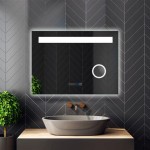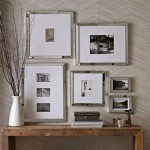Are Mirrors Waterproof? Understanding Water Resistance and Mirror Durability
Mirrors are ubiquitous in modern life, found in bathrooms, bedrooms, dressing rooms, and countless other settings. Given their frequent presence in environments prone to moisture, such as bathrooms, the question of whether mirrors are waterproof naturally arises. The straightforward answer is no; mirrors are not inherently waterproof. However, the degree to which they resist water damage varies depending on their construction and installation. Understanding the components of a mirror and the principles of water intrusion is crucial for appreciating their vulnerability to water damage and how to mitigate potential problems.
A typical mirror comprises several layers. The primary layer is the glass substrate, which provides the transparent surface allowing light to pass through. Behind the glass is a reflective coating, traditionally made of silver or aluminum. This metallic layer is the key element responsible for producing the reflective image. Over the metallic layer, a protective coating is applied. This protective layer is designed to shield the delicate metallic layer from scratches, corrosion, and other forms of damage. Paint layers are often added to the back of the mirror to provide additional protection and to bond the reflective and protective layers to the glass.
While glass itself is generally waterproof, the other layers of a mirror, particularly the reflective and protective coatings, are far more susceptible to water damage. When water penetrates these layers, it can lead to a phenomenon known as desilvering or black spot. This manifests as dark, irregular patches appearing on the mirror's surface, diminishing its reflective quality and aesthetic appeal. The effectiveness of the protective coating and the quality of the sealant used during installation play pivotal roles in determining a mirror's longevity in damp environments.
Key Point 1: The Vulnerability of the Reflective Layer
The reflective layer, commonly composed of silver or aluminum, is the Achilles' heel of most mirrors when it comes to water exposure. Silver, while highly reflective, is prone to oxidation when exposed to moisture and air. This oxidation process gradually corrodes the silver layer, causing it to lose its reflectivity. Aluminum, although more resistant to oxidation than silver, is still susceptible to corrosion, particularly when exposed to alkaline substances commonly found in cleaning products. The protective layer applied over the reflective layer is intended to act as a barrier against these corrosive agents, but its effectiveness is not absolute. Any imperfection or breach in this protective layer creates an entry point for moisture, leading to accelerated corrosion.
The process of desilvering, or mirror rot, often begins at the edges of the mirror where the protective coating is thinnest or where the sealant is compromised. Water seeps in between the glass and the reflective layer, initiating the corrosion process. This corrosion gradually spreads inwards, creating the characteristic dark spots or blotches that are indicative of water damage. The rate at which desilvering occurs depends on the frequency and duration of water exposure, as well as the quality of the mirror's construction.
In humid environments, the constant exposure to moisture in the air can also contribute to the slow degradation of the reflective layer, even without direct contact with water. Condensation forming on the mirror's surface can penetrate through microscopic imperfections in the protective coating, gradually leading to corrosion. This is especially problematic in bathrooms where steam from showers and baths creates a persistently humid environment.
Key Point 2: The Role of Protective Coatings and Sealants
The protective coating applied over the reflective layer is the primary line of defense against water damage. The composition and quality of this coating significantly impact the mirror's overall water resistance. Some mirrors utilize a single layer of protective paint, while others employ multiple layers with different properties to enhance protection. High-quality protective coatings are often composed of durable, water-resistant materials that effectively seal the reflective layer from moisture.
The sealant used to adhere the mirror to the wall or frame is equally crucial in preventing water intrusion. A properly applied sealant creates a watertight barrier that prevents water from seeping behind the mirror and attacking the reflective layer. Silicone-based sealants are commonly used due to their flexibility and water resistance. However, the effectiveness of the sealant depends on proper surface preparation and application. The surface must be clean and dry before applying the sealant, and the sealant must be applied evenly and without gaps to ensure a complete seal. Over time, sealants can degrade due to exposure to UV light, temperature fluctuations, and cleaning agents. Regular inspection and maintenance of the sealant are necessary to maintain its integrity.
The edges of the mirror are particularly vulnerable to water intrusion. Mirrors with polished or beveled edges are more susceptible to water damage because these edges lack the protective coating present on the back surface. Sealing the edges of the mirror with a specialized edge sealant can provide an additional layer of protection against water damage. Furthermore, using mirror mastic, a specialized adhesive designed for mirrors, is crucial for secure and water-resistant installation. Regular adhesives may not provide the necessary adhesion or water resistance for long-term mirror stability.
Key Point 3: Mitigation Strategies and Water-Resistant Alternatives
While mirrors are not inherently waterproof, several strategies can be employed to mitigate the risk of water damage and prolong their lifespan, especially in moisture-prone environments. First and foremost, proper ventilation is essential. Ensuring adequate airflow in bathrooms and other humid areas helps to reduce condensation and prevent moisture buildup on the mirror's surface. Using exhaust fans during and after showers and baths can significantly reduce humidity levels.
Regular cleaning of the mirror is also important. Avoid using abrasive cleaners or scouring pads that can scratch or damage the protective coating. Instead, use a soft cloth and a mild, non-abrasive cleaner specifically designed for mirrors. When cleaning, avoid spraying cleaner directly onto the mirror, as this can allow liquid to seep behind the mirror. Instead, spray the cleaner onto the cloth and then wipe the mirror surface.
Consider using mirrors specifically designed for high-moisture environments. These mirrors often feature enhanced protective coatings and sealed edges to provide greater resistance to water damage. Some manufacturers also offer mirrors with a special coating that repels water and prevents condensation. As an alternative, acrylic mirrors are a water-resistant option, although they may not offer the same level of clarity and reflectivity as traditional glass mirrors. Proper installation is paramount. Use a high-quality, mildew-resistant silicone sealant to create a watertight seal around the mirror's edges. Ensure that the surface is clean and dry before applying the sealant. Regularly inspect the sealant for cracks or damage and reapply as needed. Furthermore, consider using a frame to provide an additional layer of protection and to conceal the edges of the mirror where water damage is most likely to occur.
By understanding the vulnerabilities of mirrors to water damage and implementing these mitigation strategies, it is possible to significantly extend the lifespan of mirrors, even in challenging environments. Investing in high-quality mirrors with robust protective coatings and ensuring proper installation and maintenance practices are crucial steps in preserving their appearance and functionality.

Gocomma Car Side Rear View Mirror Waterproof Review Carplay Life

Anti Glare Blind Spot Mirrors For Cars Blue Tinted Design Waterproof 360 Degree Rotatable Hd Convex Rear View Mirror Frameless Universal Car Safety 2 Pack China Wing

Car Rearview Mirror Waterproof Membrane

Bathroom Vanity Mirror 40 X 24 Inch Wall Mounted With Light Smart Touch Dimmable Makeup For Bedroom Anti Fog And Ip44 Waterproof Mirrors Te447 Com

Buy Car Rear Mirror Waterproof Side Window Glass S Anti Fog Rain Proof Kogan Com Feature 100 Band New Universal Designed Rearview Protective For Truck Trailer Etc Which Fits

Buy Side Mirror Waterproof Sticker Car Rear View Anti Rain Glare Clear Coated Coating Universal Fit

Mirror Rain Visor Eyebrow 2 Pcs Universal Car Rear View Guard Waterproof And Rainproof Sun Visors For Mirrors Side Covers Suv Com

Car Rearview Mirror Waterproof Window Membrane Anti Fog In Stickers China Made Com

7552 Anti Fog Scratch Interior Rearview Car Mirror Waterproof Hd Clear Protective Sticker

Car Rearview Mirror Anti Fog Side View Waterproof Eguriro The Smart Choice For Ping In Rwanda








